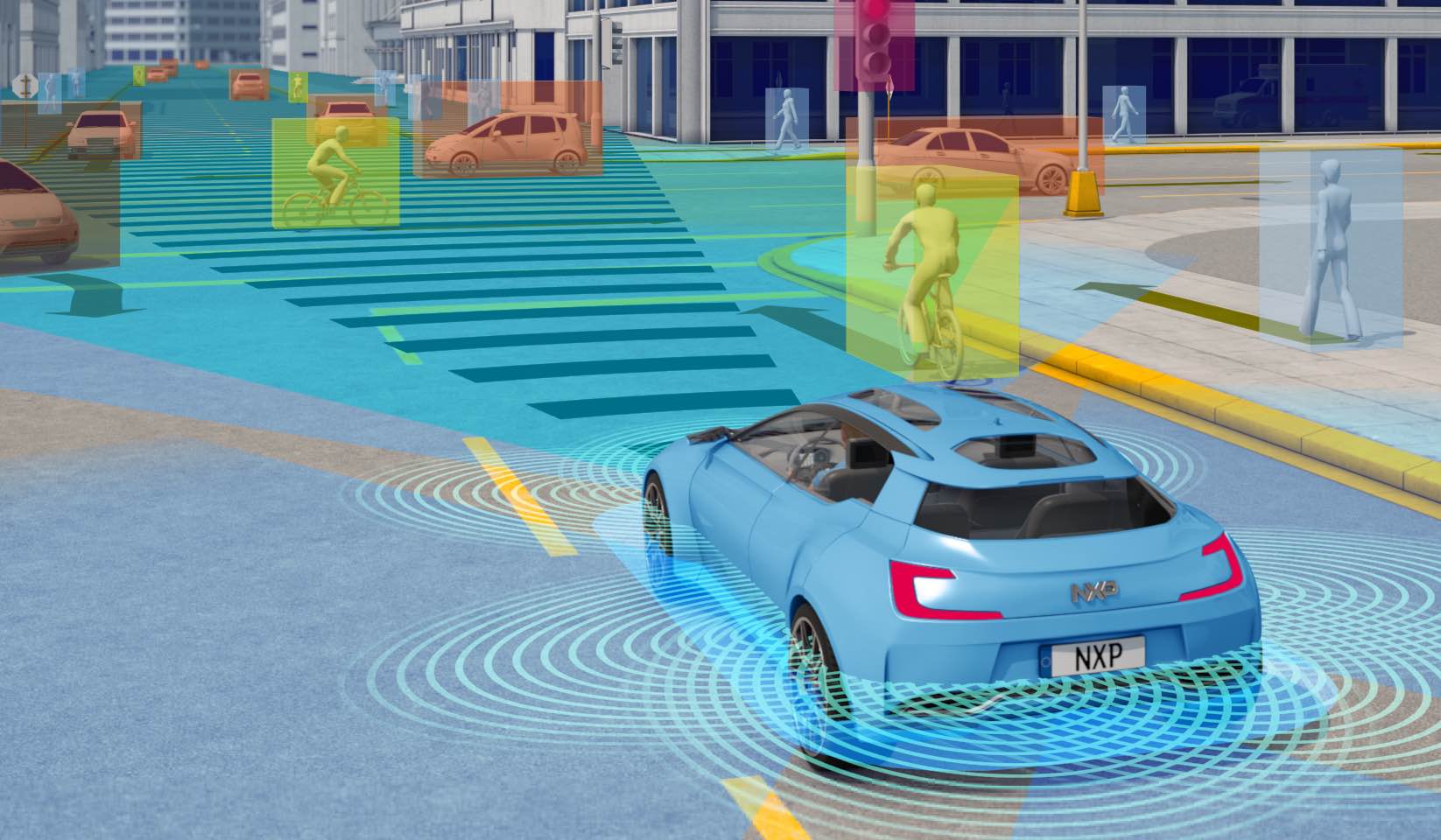
People who live with dogs are more likely to own cars and drive further than people who don't, a new U.K. study finds — but the systemic interventions that could make low-carbon living possible for more British pet parents would help animal-lovers across the pond, too.
Researchers at the University of Leeds found a strong positive correlation between high annual driving mileage and having a pup in the family, with households who count multiple canines in their families most likely to drive the most. That correlation got even stronger in urban areas, where 34 percent of Brits don't own cars, as compared to rural areas, where pretty much every resident drives a lot regardless of whether they've got a furry friend.
The research was published in Transport Findings.
No comparable study measures the travel behavior of families with dogs in the U.S., but anyone who's ever tried to get their pup to the vet or a hiking trail in a car-dependent American city can probably relate to these findings. Or, at least, I can.
To break the fourth wall for just a moment: I'm a proud sustainable transportation advocate who tries to drive as little as possible, and I'm also the proud companion of an 80-pound mutt named Zozobra. Zozo is adorable, deeply affectionate, gregarious, well-behaved, and absolutely terrified of the bakfiets-style electric cargo bike we bought specifically to get him to places we couldn't reach on our collective six feet. Needless to say, my dog is a big part of why my household still begrudgingly maintains the insurance on our decrepit Toyota, which sits gathering rust in a free, city-subsidized parking space for most of the year.
Of course, it's not really my dog's fault that my husband and I keep having to shovel money into a gas tank. (And really, how could you blame that face?) The real reason why car-free dog-parenting is a virtual impossibility in my city has more to do with the planning and policy decisions the leaders who built it — decisions that can, and should, be un-made, for my family and the roughly 39 percent of U.S. households who have canine companions of their own. (And that stat is from before the pandemic's puppy adoption boom.)
Here are five ways that cities could be more pet-friendly — and a lot of photos of my dog, because he is very cute.
1. Make cities (dog)-walkable
Let's start with the obvious: it's really, really hard to get your dog the exercise he probably needs if your neighborhood streets aren't safe for either of you to walk.
Despite broad consensus among veterinarians that the vast majority of dogs need to be walked at least once a day — no, just letting them run around in a backyard usually doesn't cut it – about 50 percent American pet partners admit that they don't regularly take their pets out for a stroll. Unsurprisingly, a 2008 study found that those who did were more likely to live in highly walkable neighborhoods — and the ones who didn't were significantly more likely to have their own health problems related to sedentary lifestyles.
But making cities "walkable" for the 195 distinct breeds of dogs recognized by the American Kennel Club (not to mention the infinity of beautiful mutts in between) isn't necessarily a simple task, even if common-sense recommendations like completing sidewalk networks are pretty universal. Just like their human companions, pups have a range of physical abilities and needs that impact how they interact with their built environment: a healthy young German Shepherd, for instance, might easily be able to dash across an arterial on a walk signal programmed to the MUTCD's unforgiving recommendations, while a pokey old Frenchie might struggle. Meanwhile, that same Frenchie might do perfectly with a slow walk around a single neighborhood, while Rin Tin Tin may need several hours of robust exercise in a dynamic, stimulating setting that gives him the mental exercise he needs along the way.
Some researchers have attempted to rank the dog-walkability of American cities, but the results weren't exactly great. A 2017 study found that dogs in just one American city — San Francisco, Calif. — spent an average of 30 minutes or more on the leash every day, which is the minimum amount of exercise that animal behaviorists recommend most pups get. San Francisco's sky-high WalkScore, which measures how comfortable humans feel traveling on foot, probably had something to do with it.
And while we won't dwell on it because it's crushingly depressing, making cities less car-dominated could absolutely save a lot of canine lives in crashes, too. An estimated 1.2 million dogs die on U.S. roads every year — and to get anywhere close to Vision Zero for them will take a lot more than good fences and pet-specific seatbelts. It will take fundamentally rethinking our road hierarchy to make our streets safer for all species.
2. Add more green space – and dog runs
Walkable access to parks is an essential element of any people-centered neighborhood. But without walkable access to dog parks, many American pet parents will find themselves loading their pup in the car a lot more often than they should.
According to a 2016 survey from the National Recreation and Park Association, about 70 percent of Americans can get to a neighborhood park without getting in an automobile, though that access isn't always equitable; people of color are three times more likely to live in "nature-deprived" areas in the U.S.) A 2015 survey from the same group, though, found that very few of those green spaces have dedicated facilities for canines: only 1,200 dog parks were estimated to be in operation in the United States that year, or just one percent of the roughly 108,000 neighborhood parks that were available to residents around the same time.
Particularly for high-energy dogs like mine, dog park access isn't just a luxury; it's a necessity for canine health (and for pet-parent sanity, since under-exercised pups often display behavioral problems like destructive chewing and excessive barking). Developing more green space directly in urban neighborhoods by turning parking lots to parks — and installing dog runs, which don't need to take up a lot of space — could make it possible for more dog companions to skip the drive to the fancy dog park on the edge of town and give their buddy the off-leash time they need nearby.
3. Embrace pet-friendly zoning
Sadly, there's one time when many pet caregivers in auto-centered cities can't avoid putting their pup in the car: when their buddy is too sick to walk on their own. (And as inspired as I am by folks who find ingenious ways to schlep their bigger dogs to the vet on transit, I'm pretty confident my energetic (and gigantic) Malamute mix wouldn't tolerate being shoved in a duffel bag.)
That's in large part because of American cities' restrictive zoning codes, which often exclude veterinary offices from standard commercial uses, particularly if they provide medical services that require pets to be supervised overnight. Compounded by vet shortages and high city rents, neighborhood animal hospitals are a vanishing breed, forcing many people to load up their furry friends for long drives even for basic check-ups, rather than driving a far shorter distance — or, for more easily-totable pets, carrying them in a travel crate.
Even dog-focused businesses that don't require special kennel licenses often have a hard time finding places to open in U.S. neighborhoods, thanks to exclusionary, residential-only zoning that makes opening a simple pet supply store or dog grooming salon almost impossible. That can leave pet parents driving to the big box store at the edge of town rather than buying their kibble closer to home.
We're lucky that our city has at least a little Zozo-friendly zoning, and we can walk him to a clinic a few blocks away for his annual shots; there are even a few neighborhood pet stores within cargo-biking distance. More U.S. pet parents deserve the same privileges.
4. Let the dogs in

With the exception of a small handful of major metros, many U.S. cities like mine don't allow non-service animals on public transportation — and even those who do let Rover ride restrict pet parents to non-peak hours, or require pups to be confined to purses or travel crates.
But that's just one example of the many, many places in the U.S. where even the most well-behaved dogs aren't allowed, effectively forcing their best friends to use a car with a cracked window as a kind of massive, gas-powered dog kennel any time they run an errand with a pup in tow. (A practice, by the way, which isn't great for pet safety; about 80 dogs a year die in hot cars in the U.S. alone.)
In a viral 2017 article for the Washington Post, journalist Cinnamon Jazner argued that many bans on well-behaved dogs are fundamentally irrational, noting that in "bars and other places where pets don’t pose hazards to food safety, people should be able to spend time with their pets." She also points out that comparable bans don't usually apply to notoriously messy toddlers, who "pose similar risks to walls and floors" in rented apartments as many dogs, but whose parents aren't subject to the additional costs of pet rent.
I couldn't find research on how many Americans support her position, but a 2020 survey conducted in similarly-autocentric Australia, where pups are restricted from buses and trains, showed that 77 percent of respondents would support letting them on board, with exceptions for aggressive dogs and when passengers self-report severe allergies.
Anecdotally, at least, I'll admit to loading Zozo into the car a few times when I needed to get him to a walkable destination, simply because I needed to stop at a dog-unfriendly shop on the way and didn't feel comfortable leaving him tied up outside. A simple policy shift could easily prevent such unnecessary trips.
5. Pedal-assisted pet transport
OK: this one probably won't help Zozo.
But e-bike evangelists are increasingly touting the benefits of pedal-assisted bikes as pet transport, particularly for larger breeds that take some muscle to haul. There are dozens of buyers guides that advise pet parents on the right kind of bike trailers, baskets, pup-specific sidecars, and other carriers they might try, and the electric cycles those accessories would attach to may soon be eligible for a refundable tax credit through the Build Back Better Act (if it passes, and if it's not negotiated out of the bill first). Cities themselves can make biking with dogs more attractive by making their cities more comprehensively bikeable for all, so pet minders never have to worry that they and their precious puppy cargo might be hit by a driver.
Maybe by the time that happens, I'll be able to train this dope to ride with me, too.










